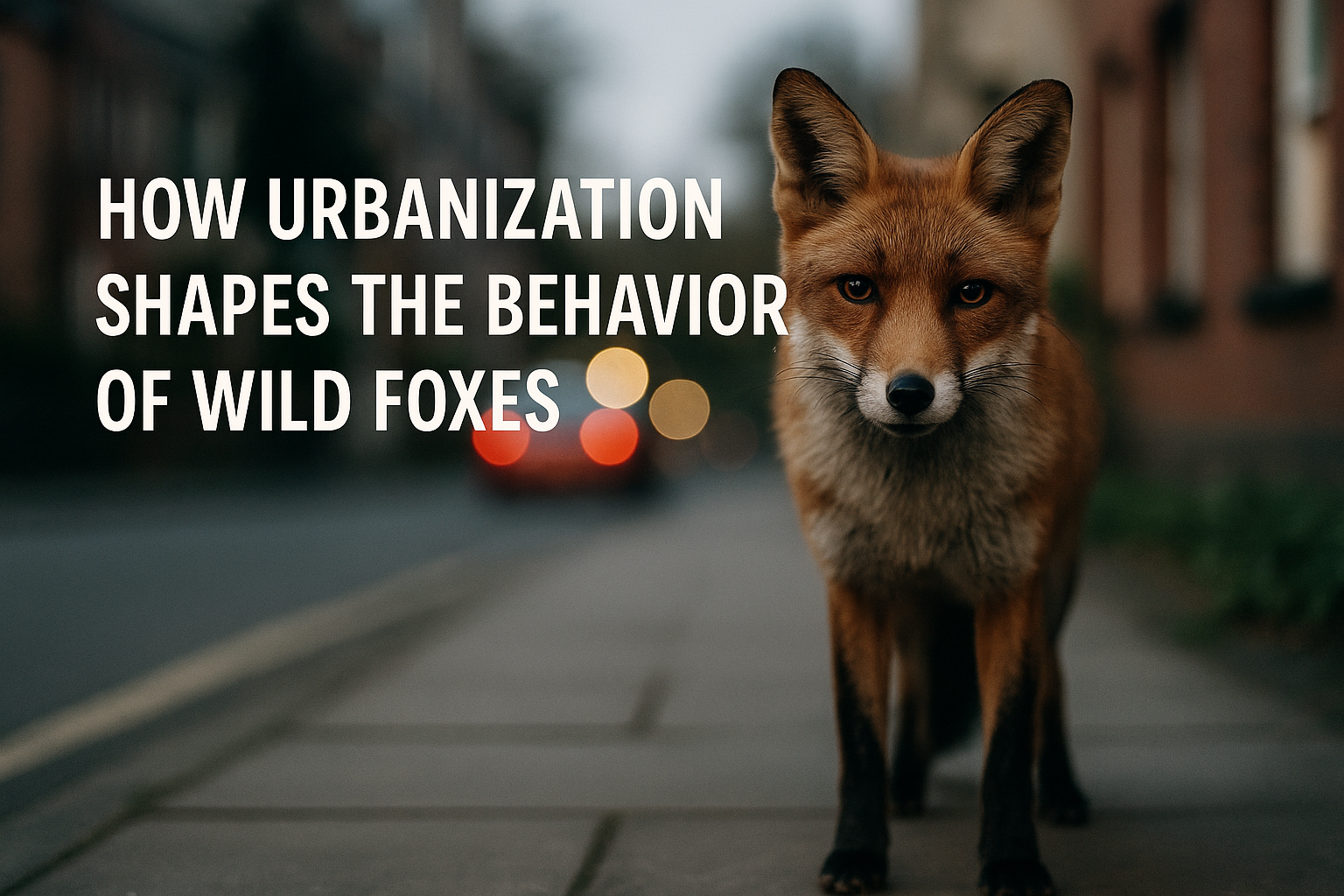Foxes are among the most adaptable animals on Earth, thriving in forests, grasslands, and increasingly, in cities. As urbanization expands, red foxes (Vulpes vulpes) and other species are changing their behaviors to survive—and even thrive—in human-dominated landscapes.
From scavenging trash to altering their social structures, urban foxes exhibit fascinating adaptations that set them apart from their rural counterparts. This article explores how city life is reshaping fox behavior, from hunting habits to mating strategies, and what this means for wildlife conservation.
1. The Shift from Country to City: Why Foxes Adapt So Well
Foxes are natural opportunists, making them perfect candidates for urban living. Unlike wolves or bears, which require vast territories, foxes are small, agile, and highly intelligent—traits that help them navigate human environments.
Key Reasons Foxes Thrive in Cities:
-
Abundant Food Sources: Garbage bins, pet food, and rodents provide easy meals.
-
Fewer Natural Predators: No wolves or lynxes to threaten them.
-
Shelter Availability: Dens under sheds, parks, and abandoned buildings offer safety.
A 2020 study in Proceedings of the Royal Society B found that urban foxes have smaller territories than rural ones, as resources are more concentrated.
2. Diet Changes: From Hunting to Scavenging
Rural foxes primarily hunt small mammals like rabbits and voles. Urban foxes, however, have developed a flexible, human-dependent diet.
What Urban Foxes Eat:
-
Human Food Waste (40-60% of diet)
-
Roadkill and Pet Food
-
Insects and Fruits (seasonal)
Research from the University of Bristol revealed that urban foxes have different gut microbiomes than rural foxes, helping them digest processed foods.
3. Altered Activity Patterns: Night Owls of the City
To avoid humans, urban foxes have shifted their activity to primarily nocturnal behavior. However, in quieter suburbs, some foxes remain active during dusk and dawn.
Behavioral Shifts in Urban Foxes:
| Rural Foxes | Urban Foxes |
|---|---|
| Mostly crepuscular (dawn/dusk) | Strongly nocturnal |
| Avoid humans | Tolerate closer human proximity |
| Larger home ranges | Smaller, fragmented territories |
A 2021 study in Animal Behaviour found that urban foxes are bolder and more exploratory than rural foxes, likely due to constant exposure to human stimuli.
4. Social Structure: Less Territorial, More Tolerant
In the wild, foxes are solitary hunters with strict territories. But in cities, their social dynamics change dramatically.
Urban Fox Social Adaptations:
-
Higher Population Density: More foxes live in smaller areas.
-
Reduced Aggression: Less need to defend large territories.
-
Communal Denning: Some groups share resting spots.
A study in Journal of Zoology observed that urban foxes vocalize less than rural foxes, possibly to avoid drawing human attention.
5. Human-Fox Conflicts: Love Them or Loathe Them?
As foxes move into cities, interactions with humans increase—leading to both admiration and conflict.
Common Urban Fox Issues:
-
Trash Raiding (leading to calls for fox-proof bins)
-
Pet Conflicts (rare, but small pets may be at risk)
-
Disease Concerns (foxes can carry mange and parasites)
However, foxes also help control rodent populations, reducing the need for pesticides.
6. The Future of Urban Foxes: Coexistence or Control?
As cities expand, foxes aren’t going anywhere. The question is: Can humans and foxes coexist peacefully?
Possible Solutions:
-
Better Waste Management (secure bins, composting rules)
-
Wildlife-Friendly Urban Planning (green corridors, fox-proof fencing)
-
Public Education (dispelling myths about fox dangers)
Cities like London and Berlin have successfully managed fox populations without culls, proving that coexistence is possible.
Conclusion: Foxes—The Ultimate Urban Survivors
Urbanization is transforming fox behavior in remarkable ways. From dietary shifts to social changes, these clever canids are rewriting the rules of wildlife adaptation.
By understanding their behavior, humans can create cities where foxes—and other wildlife—thrive without conflict.




Leave a Comment